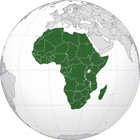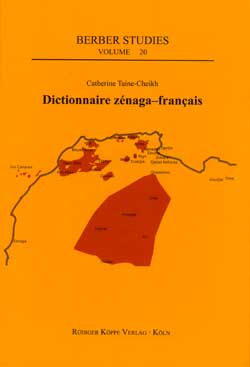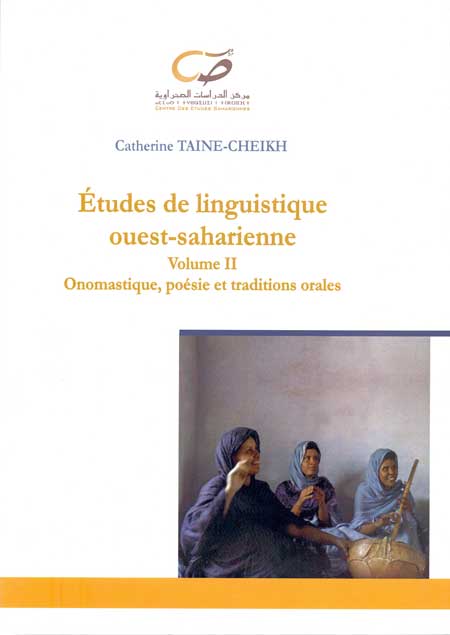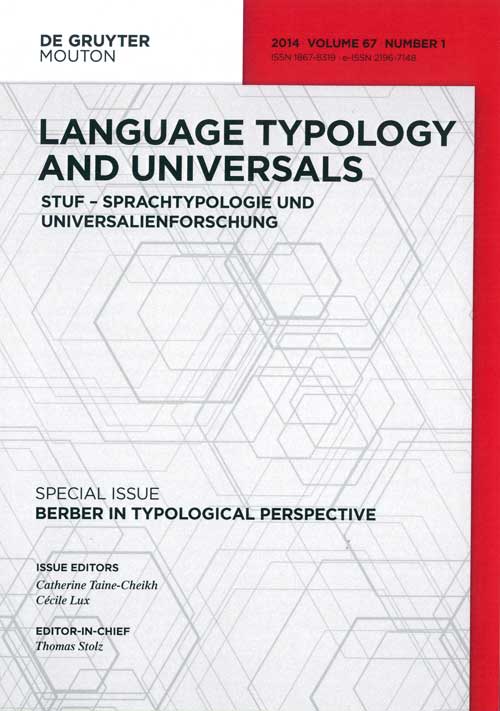
Languages of Africa
and the Middle East
CNRS researchers: S. Naïm – L. Souag – C. Taine-Cheikh
- Research professors: C. Leguy
- Affiliate: M. Dunham – S. Khichane
- Postdoctoral researchers: I. Jordanoska
- Doctoral students: F. Issaiene – H. Le Doeuff – C. Ondo Obame – A. Saïed – L. Silue – N. Rochant – S. Waigi
- PhD theses completed (since 2013): M. Al-Maqtari – B. Boro – S. Coulibaly – L.G. Gamille – P. Glâtre – E. Gutova – A. Hassan – S. Khichane – R.O. Ella – N. Mtavangu – E. Öpengin – A. Saad – K. Simnara
- Former members: C. Lux (2011- 2012) – A. Al-Bataineh (2015-2016) – † L. Bouquiaux – V. de Colombel – † G. Guarisma – S.K. Kaboré – F. Leguennec-Coppens – J. Leroy – C. Paulian – J. M.C. Thomas – † J.-P. Caprile – † F. Quinsat – † A. Vydrina
|
Languages studied:
|
Linguistically and anthropologically, Africa and the Middle East are closely linked. Most of the Middle East’s languages belong to a largely African family, and most sub-Saharan African languages bear the traces of contacts with Arabic and other languages spoken to their north. We have therefore opted to present both regions’ languages together, rather than to perpetuate the traditional division of continents – all the more so because our researches often embrace both sides of this divide at once.
At present, our research in Africa and the Middle East mainly cover the Afroasiatic phylum, and in particular the Semitic (Arabic, Aramaic) and Berber families. This phylum covers a large part of Africa and most of the Middle East. It consists of five major families: Semitic (Arabic, Hebrew, Aramaic…), Berber in North Africa, Egyptian (no longer spoken), Chadic in West Africa (Hausa, Ouldeme…), Cushitic in the Horn of Africa (Somali, Oromo…), and possibly Omotic in Ethiopia, whose status is controversial. Most of these languages are spoken by minorities and are poorly described. Those spoken by majorities include extensive dialectal diversity, which must be described in order to understand the mechanisms underlying their variation; it is hardly necessary any longer to point out the importance of dialectology for the study of typology.
Other phyla are also prominent in the region. In the northern reaches of the Middle East, we find Indo-European and Turkic. In Africa, the massive Niger-Congo phylum stretches from Senegal to South Africa, alongside many smaller families sometimes grouped together into two phyla: Nilo-Saharan (controversial) and Khoisan (obsolete). Within this region, our researchers have mainly focused on the Songhay and Gur families. Songhay is variously considered as either a branch of Nilo-Saharan or an isolated family. It is concentrated mainly around the Niger river, but has a widely scattered penumbra, with some geographically isolated varieties spoken thousands of kilometres away from its heartland. Gur is a branch of Niger-Congo, and includes about sixty languages spoken in and around Burkina Faso, just south of the main Songhay areas. Besides Gur, several of our doctoral students are doing research on Niger-Congo languages, mainly in West Africa.
Fig. – African languages studied at LACITO
(extracted from the general LACITO map, with explanation of the colour coding)
Ever since LACITO was founded in 1976, our researchers have been studying a wide variety of African and Middle Eastern languages. Many of our former members have remained very active even after retirement; the last volume of the Encyclopédie aka, a project started by our unit in 1983, was finally published in 2014. Their research covered, in particular, the following families:
— Bantu : L. Bouquiaux (Birom), M. Dunham (Langi), G. Guarisma (Bafia), F. Leguennec-Coppens (Swahili), J. Leroy (Mankon), C. Paulian (Koukouya), M.F Rombi (Ngazidja, Maore), J. M.C. Thomas (Aka)
— Gur: S. K. Kaboré (Moore)
— Ubangian: L. Bouquiaux (Sango), J. M.C. Thomas (Ngbaka)
— Central Sudanic: †J.-P. Caprile (Mbay)
— Chadic: V. de Colombel (Ouldeme), †J.-P. Caprile (Mokilko, Gabri, and Tumak)
— Arabic: †F. Quinsat (Classical and Maghrebi Arabic).

The Afroasiatic languages
(based on “Les langues dans le monde ancien et moderne : Les langues chamito-sémitiques”, D. Cohen, ed.)
Presentation
Languages Description
Describing little-known or underdescribed languages is an essential prerequisite for any historical, comparative, or typological approach. Formal education and urbanization are driving many languages towards extinction, while promoting standardisation and the decline of dialectal diversity in the rest. Language description is thus a particularly urgent task, reflected in our researchers’ monographs and dictionaries as well as in the theses of their doctoral students.
Sociolinguistics and contact
A language is necessarily embedded within a social, anthropological and ecological context. This context must be taken into account not only in order to study variation (phonological, morphological, lexical…) but also for many other purposes, such as to understand the relations between language and identity, or to analyse particular semantic fields. It becomes all the more essential when we seek to explain language distribution, which results in large part from massive expansions of dominant languages regularly redrawing the linguistic map of the world.
In Africa and the Middle East, Arabic is the most prominent case, and its expansion is still ongoing. As a result, some Arabic varieties, like many other Afroasiatic languages, show important characteristics – structural or lexical – reflecting contact with other languages. But Arabic is only the most recent of a whole series of more or less localised expansions – Aramaic in the Near East, Berber in the Sahara, Mande and Songhay in West Africa… In order to understand the region’s history, the study of language contact is essential.
At Lacito, our researchers mainly study the effects of contact among Arabic, Aramaic, and South Arabian on the one hand, and among Arabic, Berber, and Songhay on the other.
Linguistic typology
The study of African and Middle Eastern languages is rich in data of interest for typological studies. In this perspective, we have carried out and published various works on questions of syntax (expression of the reflexive, structure of coordination and dependence, verbal valence, differential marking of the object…), morphosyntax (tense, aspect, modality, grammaticalization phenomenon…), semantics and phonology. Among the themes addressed, the question of the relationship between time and space was the subject of a joint research that brought together specialists from different languages.
Oral literature and linguistic anthropology
Researchers at LACITO in general, and its Africanists in particular – ever since J. M.C. Thomas et L. Bouquiaux – have been involved in rethinking anthropological linguistics and ethnolinguistics. Before it became a transversal operation open to all cultural areas, the research operation dedicated to “Rhetorics” had been established by Africanist researchers; it has continued to develop via various themes towards “Language games”, the theme of the next five years. This domain has been an important focus of ours since 1976, including the study of linguistic anthropology, verbal arts, and oral literature.
Archived corpora and data collection
The corpora that we collect on our fields enrich the sound archives of the LACITO’s Pangloss website:
Corpus ouldémé, par Véronique de Colombel.
Corpus arabe yéménite, par Samia Naïm.
Corpus langi, par Margaret Dunham.
Corpus mankon, par Jacqueline Leroy.
Corpus maorais, par Marie-Françoise Rombi.
Corpus mbugwe, par Margaret Dunham.
Corpus nyilamba, par Margaret Dunham.
Corpus grand-comorien, par Marie-Françoise Rombi.
Corpus siwi, par Lameen Souag.
Corpus boomu, par Cécile Leguy
Dissemination of knowledge
- Conferences and workshops
– International Workshop: Le berbère dans une perspective typologique, 26 October 2012 (Villejuif, France), organised by C. Taine-Cheikh & C. Lux
– Back(ing) Glottal & Guttural Patterns in Onsets and Nuclei, International Workshop, 2-4 May 2012 (Paris, France), organised by S. Naïm (Lacito) & J.-L. Léonard (LPP)
– Aires linguistiques, 30 September 2011 (Paris, France), organised by E. Adamou, Y. Matras & C. Taine-Cheikh
– Population and language change, 26 March 2010, Villejuif (France), organised by E. Adamou, F. Jacquesson & C. Taine-Cheikh
– Déserts. Y a-t-il des corrélations entre l’écosystème et le changement linguistique ?, 19 October 2009, Villejuif (France), organised by C. Taine-Cheikh, E. Adamou & F. Jacquesson
– Itinéraires, dynamique des repères spatiaux et temporels, October 2003, Villejuif (France), organised by S. Naïm
– Espace, langue et cognition, International Workshop, 2001, Villejuif, organised by J.-P. Desclés (Paris 4) & S. Naïm
- Teaching
Paris 3 Sorbonne nouvelle
– “Méthodes de collecte des données dialectales, linguistique de terrain” (LYM05), M1-M2 de Linguistique, ILPGA. — 2013-2014 (I. Bril & S. Naïm)
Inalco
– Arabe Maghrébin, L3 “Hassaniyya (Langue et littérature)” – 2012-2017 (C. Taine-Cheikh)
Paris 4 Sorbonne
– “Typologie et diversité des langues: phonologie et syntaxe (dialectes arabes modernes)”, M1-M2 (CM), UFR de Langue française — 2003-2007 (S. Naïm)
– “Structures et systèmes de quelques langues naturelles”, L (CM), UFR de Langue française
2006-2009 : initiation au zénaga (langue berbère) (C. Taine-Cheikh)
2007-2008 : Le cas des langues tchadiques (V. de Colombel)
Université de Lille 3
– “Linguistique arabe” — 2006-2008 (F. Quinsat)
- Ongoing PhD theses
– ISSAIENE Fatima Zahra, Littérature orale du Maroc. Analyse ethnolinguistique des énigmes, dir. F. Guérin, Paris IV.
– SAÏED Abdessalem, L’expression de la comparaison en arabe formel ou non formel (tunisien), dir. F. Guérin, Paris IV.
– WAIGI Sarah, Études linguistiques en langue kikuyu (Kenya), dir. A. François, Paris III.
- PhD theses defended successfully
– AL-MAQTARI Mona, Etude contrastive des préposition “à” et “de” en français (oral et écrit) et leurs équivalents en arabe standard et dialectal yéménite, dir. C. Taine-Cheikh, Paris III.
– BOUKARY Boro, La littérature orale des Samo du Burkina Faso : essai d’identification des genres oraux, contextes d’utilisation et fonctions, dir. C. Leguy, Paris III.
– COULIBALY Sékou, Le minyanka parlé dans le cercle de Bia (Mali) : une description phonologique et morphosyntaxique, co-dir. V. Vydrin (INALCO) & I. Choi-Jonin, Paris III.
– GUTOVA Evgeniya, Grammaire du berbère ketama (Nord du Maroc), dir. C. Taine-Cheikh, Paris III.
– KHICHANE Samia, Ethnographie des conflits domestiques en Kabylie : injures, commérages, malédictions, dir. C. Leguy, Paris III.
– SAAD Aisha, Les constructions en avoir –possessives et à support– dans le dialecte libyen de Benghazi, dir. S. Naïm, Paris III.
– SIMNARA Komi, L’expression des émotions en lama, co-dir. S. Naïm et P. Boyeldieu (LLACAN), Paris III.
– ELLA, Régis Ollomo, Description linguistique du shiwa, langue bantu du Gabon: Phonologie, morphologie, syntaxe, lexique, dir. S. Kaboré, Paris III. Thèse soutenue le 6 décembre 2013.
– GAMILLE, Léa Ghislaine, Éléments de description phonologique et morphologique du lumbu, langue bantu (B44) du Gabon, parlée à Mayumba, dir. S. Kaboré, Paris III. Thèse soutenue le 18 décembre 2013.
– HASSAN Ahmad, Compléments de manière en français et en syrien, co-dir. I. Choi-Jonin & S. Naïm (Lacito-Paris III), Toulouse II.
– MTAVANGU, Norbert, La contribution des Français à l’étude du swahili : le cas de Charles Sacleux (1856-1943), dir. O. Racine-Issa. Thèse soutenue le 5 décembre 2013.
– ÖPENGIN, Ergin, Clitic/affix interactions: a corpus-based study of person marking in the Mukri variety of Central Kurdish, co-dir. F. Jacquesson & G. Haig (Univ. de Bamberg), Paris III et l’Université de Bamberg. Thèse soutenue le 16 septembre 2013.
(last update 15 March 2023)




















